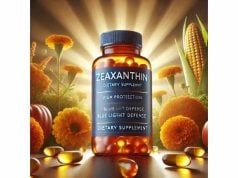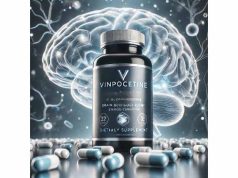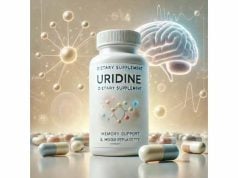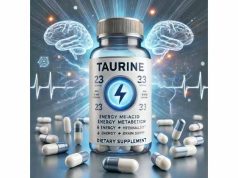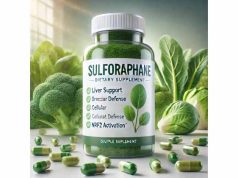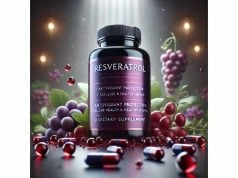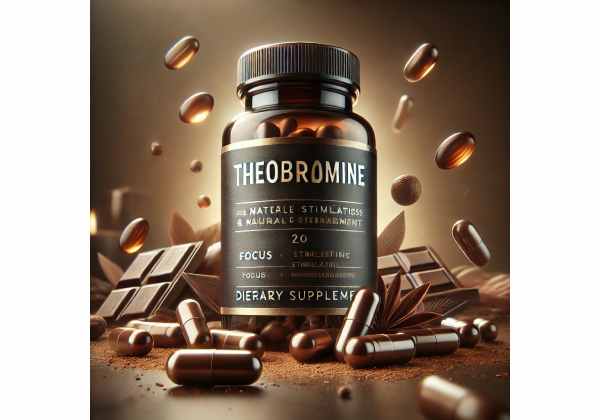
Theobromine, a naturally occurring alkaloid found chiefly in cacao beans, has long been associated with chocolate’s pleasurable effects. Beyond providing a mild energy lift and a subtle mood enhancement, theobromine also boasts potential for bolstering mental well-being. Recent research is shedding light on how this compound may help stabilize mood, support cognitive function, and ease stress-driven symptoms. Whether through nutrient-rich cacao products or targeted supplementation, theobromine offers intriguing possibilities for managing certain psychiatric and neurological challenges. In this in-depth guide, we explore the primary characteristics of theobromine, examine its role in the brain, and share practical strategies for incorporating it into a holistic approach to mental health.
Table of Contents
- Theobromine Essentials and Chemical Profile
- Mechanisms That Support Mental Health and Brain Function
- Unique Merits of Theobromine in Psychiatric Care and Cognitive Enhancement
- Guidelines for Optimal Use of Theobromine
- Current Research Findings and Explorations
- Frequently Asked Questions
- References and Sources
Theobromine Essentials and Chemical Profile
Theobromine is an organic molecule belonging to the methylxanthine family—similar to caffeine but with distinct pharmacological attributes. It naturally occurs in cacao beans, kola nuts, guarana berries, and certain tea plants. Though it shares structural similarities with caffeine, it exerts milder stimulant effects, rendering it less likely to provoke jitteriness or restlessness in most people.
Origins and Common Sources
- Cacao and Chocolate: Cocoa powder, dark chocolate, and raw cacao nibs contain the highest concentrations. Milk chocolate generally has lower levels due to greater dilution with sugar and dairy.
- Yerba Mate: This South American beverage occasionally carries small amounts of theobromine along with other methylxanthines.
- Guarana and Kola Nuts: Typically recognized for their caffeine, they also harbor minor theobromine content.
Main Properties
- Mild Stimulant: Theobromine raises alertness without strongly overactivating the central nervous system, resulting in a subtler effect on blood pressure and heart rate relative to caffeine.
- Vasodilatory Influence: Some research suggests that theobromine can dilate blood vessels, aiding circulation and possibly boosting cerebral perfusion.
- Smooth Muscle Relaxation: By relaxing bronchial muscles, it may soothe mild respiratory constraints—a contrast to caffeine’s more pronounced bronchorelaxant properties.
Link to Brain and Mood
While historically overshadowed by caffeine, theobromine’s mild psychoactive profile and ability to cross the blood-brain barrier highlight its potential for brain health. Its presence in chocolate, revered for mood-lifting qualities, has spurred inquiries into how theobromine might interact with neurotransmission, hormones, and physiological stress pathways. As interest in natural mental health solutions grows, many are now revisiting theobromine’s possibility for providing a gentle, more sustainable approach to improving mental health and preventing mental disorders.
From mitigating overstimulation to ensuring adequate blood flow in the brain, theobromine’s synergy of mild stimulatory and relaxing actions marks it as an intriguing compound for psychological well-being. In subsequent sections, we’ll unpack the exact mechanisms contributing to these mental health advantages.
Mechanisms That Support Mental Health and Brain Function
Theobromine exerts its influence on the human nervous system via multiple molecular pathways. While it shares some similarities with caffeine, its distinct chemical identity yields a somewhat different physiological impact, specifically pertinent to mood regulation, stress response, and cognitive clarity.
1. Adenosine Receptor Modulation
Both caffeine and theobromine are adenosine receptor antagonists. However, theobromine’s affinity appears less robust, translating to a gentler effect on:
- Wakefulness and Alertness: It moderately reduces adenosine’s action, which typically promotes relaxation. As a result, individuals might sense increased clarity and mild energy without strong jitters.
- Mood Stability: Inhibiting excessive adenosine in the brain can indirectly influence dopamine and glutamate signaling, two neurotransmitters linked to emotional balance and motivation.
2. Blood Vessel Dilation and Circulatory Benefits
By encouraging vasodilation, theobromine can assist in:
- Improved Cerebral Blood Flow: Enhanced oxygen and nutrient delivery to neurons helps maintain consistent cognitive performance, potentially thwarting mental fatigue.
- Reduced Headache Propensity: In some cases, vasodilation can mitigate certain headache triggers or tension responses, an effect of interest to those with stress-related discomfort.
3. Mild Diuretic Action
Methylxanthines, including theobromine, generally induce some diuretic effect—essentially increasing urine production. With respect to mental health:
- Possible Detoxification: Enhancing fluid excretion can help flush metabolic byproducts that might accumulate under stress. While not a principal mechanism for mental health, it can indirectly reduce certain forms of discomfort or edema that exacerbate mood issues.
4. Interaction with Neurotransmitters
Although overshadowed by caffeine’s more potent receptor-binding, theobromine still influences a variety of signaling molecules:
- Catecholamine Release: A moderate effect on norepinephrine and dopamine release might yield a gentle sense of euphoria or improved mood.
- Calming GABAergic Pathways: While not a direct GABA agonist, theobromine’s net effect can complement inhibitory signaling, especially when combined with other anxiolytic nutrients. This synergy fosters a calmer mental state without sedation.
5. Antioxidant and Anti-Inflammatory Possibilities
Cacao compounds, including theobromine, contain polyphenols recognized for antioxidant and anti-inflammatory properties:
- Neuronal Protection: Lower oxidative stress around neurons helps stave off mild cognitive decline and fosters stable emotional function over time.
- Reduced Chronic Inflammation: Prolonged inflammatory states in the brain often correlate with depression or anxiety. By tempering inflammatory mediators, theobromine may indirectly help maintain emotional equilibrium.
6. Role in Stress Hormone Regulation
Studies on rodent models hint that theobromine may slightly alter cortisol release and adrenal function, though effects in humans remain less established. By modulating the stress axis:
- Dampening Overactivation: A balanced hypothalamic-pituitary-adrenal (HPA) axis can blunt anxiety triggers and mood swings.
- Maintaining Energy: If stress hormone levels remain excessive, individuals can suffer from “crash” effects. A mild modulating role of theobromine supports sustained vitality.
7. Potential Influence on Cognition and Focus
While caffeine’s nootropic capacity is well-documented, theobromine’s unique mild stimulation and vasodilatory features suggest it, too, may enhance:
- Concentration: A more relaxed yet alert mind could lead to improved attention on tasks without the typical crash or edginess from stronger stimulants.
- Memory Processing: Adequate oxygenation combined with moderate adenosine blockade might sharpen short-term memory recall, especially under mild stress conditions.
8. Synergy with Other Chocolate Components
Cacao is not just theobromine alone; it also contains phenylethylamine, anandamide-like compounds, flavonoids, magnesium, and other nutrients:
- Combined Euphoria: Multiple psychoactive elements in chocolate collectively produce the “chocolate high,” which includes uplifting, relaxing, or cognitively supportive aspects.
- Broad Nutrient Base: Magnesium and antioxidants in cacao further buttress mental health, leading some experts to propose that theobromine’s positive actions on mood are amplified when consumed within whole chocolate or specialized cocoa extracts.
By weaving these biological threads together, it’s evident that theobromine doesn’t just provide a generic pick-me-up. Instead, it systematically addresses mood, stress tolerance, cognitive performance, and neuronal maintenance through multiple complementary pathways—a synergy that can be leveraged by those seeking to improve mental health and prevent mental disorders in a balanced, more subtle manner than caffeinated approaches.
Unique Merits of Theobromine in Psychiatric Care and Cognitive Enhancement
While numerous stimulants or adaptogens exist, theobromine’s mild yet multifaceted nature sets it apart. The compound may be particularly attractive to those who experience excessive jitteriness or anxiety with caffeine or who simply prefer a gentler cognitive boost.
1. Anxiety Reduction and Relaxed Alertness
One key hallmark is the capacity for “relaxed alertness”—a state of improved mental clarity without tension:
- Lower Anxiety Risk: Because of weaker adenosine antagonism, theobromine is less likely than caffeine to provoke or exacerbate anxiety and panic episodes.
- Smoother Energy Rise: Many users report feeling steady, calm energy with fewer spikes and dips than caffeinated drinks, which can cause rebound fatigue.
- Suitable for Sensitive Individuals: Those predisposed to anxiety or with a history of panic attacks may tolerate theobromine better than stronger xanthines.
2. Aid for Mild Depression and Mood Imbalance
Though not a direct antidepressant, theobromine’s mental uplift can help combat blues or low motivation:
- Subtle Euphoria: The pleasant sensations linked to chocolate’s theobromine might transiently improve emotional well-being, especially in synergy with other mood-lifting chocolate constituents.
- Supportive in Seasonal Affective Disorder: Some anecdotal evidence points to mild symptom relief, especially if combined with therapy, vitamin D, or bright light interventions.
3. Assistance in Attention and Productivity
For individuals needing moderate help focusing on tasks—whether at work, study, or creative pursuits—theobromine:
- Improves Concentration: Enhanced cerebral blood flow plus minimal sedation fosters prolonged mental endurance without the hyperarousal that can hamper performance.
- Pairs with Nootropics: Theobromine often stacks well with L-theanine, mild adaptogens, or lower caffeine doses, resulting in a balanced synergy for tackling mentally demanding tasks.
4. Potential in Stress-Related Fatigue
Chronic stress can deplete resilience and mental stamina. By offering slight stimulation and vasodilation:
- Combats Exhaustion: Theobromine’s gentle energy can help break the cycle of weariness without risking adrenaline surges that lead to later crashes.
- Reduced Cortisol Overactivation: If it modulates the HPA axis as suggested by some rodent data, it may mitigate stress hormone overload, further preserving mental clarity.
5. Assistance for Chronic Migraine or Tension Headaches
Anecdotally, some migraine sufferers find mild relief from moderate theobromine intake:
- Vasodilation Effects: While caffeine’s vasoconstriction can relieve certain headache types, theobromine’s milder vascular influence might help alleviate tension-based or stress-linked head pain.
- Caution Required: Headache triggers are individual; some might not respond well. Experimentation under professional guidance is recommended if migraines are severe.
6. Support for Healthy Aging and Neuroprotection
Oxidative stress and vascular decline can contribute to age-related cognitive impairment. By combining antioxidant properties with improved blood flow:
- Guarding Neuron Viability: Theobromine’s presence in cocoa, loaded with polyphenols, can reduce free radical damage in aging brains, helping preserve memory and executive function.
- Synergistic with Diet and Exercise: Coupling consistent, moderate theobromine intake with a balanced lifestyle extends its neuroprotective potential.
7. Complementary Role in Established Psychiatric Therapies
While not a primary treatment, theobromine may:
- Enhance Adherence: Individuals on certain antidepressants or mood stabilizers might prefer a small daily “ritual” of cocoa or theobromine supplement, helping them feel more engaged with their overall regimen.
- Boost Quality of Life: Gentle mood support from theobromine could improve day-to-day functioning and psychosocial well-being when integrated into an existing treatment framework.
In sum, theobromine stands out for bridging mild psychoactive stimulation, relaxation, and protective antioxidant effects. The net effect might best be described as “soft support” for well-being—an advantage for those seeking daily mental enhancement or synergy with formal psychiatric care, without the overstimulation or side effects more potent substances can produce.
Guidelines for Optimal Use of Theobromine
To unlock theobromine’s mental health potential, it’s crucial to consider safe and effective dosing, synergy with other nutrients, and any relevant lifestyle adaptations that can maximize results.
1. Typical Dosage Ranges
Human studies on standardized theobromine supplementation remain limited. Nonetheless, practical suggestions can be gleaned from dietary consumption patterns and smaller research:
- From Foods: A piece of 70–85% dark chocolate (20–30 g) can deliver roughly 100–250 mg of theobromine. Whole cocoa nibs or raw cacao may yield even higher amounts.
- Supplement Capsules: Commercial extracts usually contain 100–500 mg theobromine per capsule. Starting at ~100 mg is common, then adjusting based on tolerance and effect.
- Individual Variation: Sensitivity differs; some might feel effects at lower doses, while others can handle up to 400–600 mg daily without adverse reactions.
2. Timing Considerations
Like other mild stimulants, timing impacts your experience:
- Morning or Midday: For attention and mood support, many prefer daytime usage to sustain energy and mental clarity.
- Avoid Late Evening: Although theobromine is gentler than caffeine, it still can disrupt sleep if taken excessively near bedtime.
- Spread Out: Splitting daily intake (e.g., morning and early afternoon) may help maintain stable blood levels, especially for those prone to energy crashes.
3. Sourcing High-Quality Theobromine
Ensuring product purity and potency is key:
- Organic, Ethically Sourced Cocoa: Minimizes exposure to pesticides or heavy metals, which can accumulate in low-grade cocoa.
- Reputable Supplement Brands: Look for third-party testing that confirms the stated theobromine concentration.
- Minimal Fillers: Some products blend theobromine with other xanthines or sweeteners. Read labels to avoid unwanted additives if focusing specifically on mental benefits.
4. Complementary Nutrients and Strategies
- L-Theanine: Typically used with caffeine for calmer energy, l-theanine might also mellow out any slight overstimulation from theobromine, fostering a balanced, stress-free alertness.
- Magnesium and B Vitamins: Both essential for neurotransmission and stress resilience, they can reinforce theobromine’s subtle mood-lifting effects.
- Regular Hydration: As a mild diuretic, theobromine might elevate fluid excretion. Adequate water intake is advised to avoid dehydration-based fatigue.
- Moderate Caffeine: Combining with moderate caffeine can yield a synergy in alertness, though cautious individuals might reduce caffeine if they worry about heightened excitability.
5. Potential Side Effects and Safety Issues
Most healthy adults tolerate theobromine well, but caution is needed:
- Excessive Dose Effects: Doses significantly higher than 500–600 mg daily might induce restlessness, elevated heart rate, or digestive upset.
- Sensitivity: Those particularly reactive to xanthines (like caffeine) should start low to gauge tolerance.
- Medication Interactions: Theobromine can affect blood pressure or heart rate slightly; individuals on cardiac drugs or those with severe cardiovascular conditions should consult a professional.
- Pregnancy: Data on high-dose theobromine usage during pregnancy is limited; moderate chocolate intake is generally safe, but supplementation should be confirmed with a healthcare provider.
6. Lifestyle and Behavioral Integration
While theobromine can offer mild support, synergy with other lifestyle elements can magnify gains:
- Mindful Eating: Pairing dark chocolate with nutrient-dense meals or mindful snacking helps moderate sugar spikes and upholds stable energy.
- Physical Activity: Exercise complements theobromine’s potential to reduce stress hormones, supporting robust mood and mental performance.
- Sleep Hygiene: Maintain consistent bedtimes and calming pre-sleep routines to ensure theobromine’s mild stimulant effect doesn’t disrupt your nights.
7. Personalized Tracking
Assess whether theobromine truly enhances your mental well-being by:
- Mood Journals: Note changes in alertness, calmness, or irritability.
- Daily Stress Observations: Track subjective anxiety levels or stress triggers.
- Cognitive Tests: If aiming for productivity, try memory tasks or focus sessions to see if theobromine fosters improvements.
- Dosage Adjustments: Fine-tune your routine based on real-world feedback—some users find a sweet spot around 200–300 mg daily, while others prefer lower or higher depending on tolerance.
Used thoughtfully and in moderation, theobromine can deliver a gently uplifting effect, bridging energy, calm, and clarity for individuals seeking a balanced approach to mental health support.
Current Research Findings and Explorations
Given the popularity of chocolate as a comfort or “mood food,” science has turned its lens on theobromine to elucidate just how it might buttress psychological well-being. Below is a snapshot of emerging data in both human and animal research domains.
Human Observational Studies
- Chocolate Consumption and Mood: Large population surveys link higher dark chocolate intake with modestly lower rates of depressive symptoms. Although confounding factors are likely, theobromine’s presence remains a suspect contributor to the phenomenon.
- Cocoa Polyphenols: Trials focusing on cocoa flavanols show improved mental performance and mood markers. While these studies often highlight epicatechin or procyanidins, the mild stimulant effect from theobromine probably helps drive better attentional metrics.
Clinical Trials and Interventions
- Small Cognitive Enhancement Trials: Some pilot programs giving participants theobromine supplements or chocolate-based beverages found short-term increases in mental alertness, reduced mental fatigue, and slight improvements in mood.
- Synergy with Caffeine: Data comparing caffeine-only vs. caffeine plus theobromine suggest that combined ingestion can modulate effects, potentially reducing caffeine-related nervousness while preserving alertness.
- Long-Term Implications: Extended research remains limited. No major long-duration RCTs have yet concluded how continuous higher-dose theobromine supplementation affects depression, anxiety, or degenerative illnesses.
Animal and Cellular Research
- Calcium Homeostasis: Laboratory experiments confirm theobromine’s capacity to modulate intracellular calcium in neurons, potentially guarding them from excitotoxic stresses.
- Anti-inflammatory Markers: Animal models given cocoa extracts (including theobromine) displayed decreased inflammatory cytokines in brain tissue, supporting the notion that it can hamper chronic inflammatory states.
- Behavioral Observations: Rodent studies tracking anxiety-like behaviors highlight mild anxiolytic trends when theobromine is present, reinforcing claims about mental calm.
Unanswered Questions and Future Directions
- Precise Mechanisms: While certain pathways are outlined (adenosine blockade, vasodilation, mild diuresis), more in-depth analyses are warranted to pinpoint exact receptor interactions, especially concerning dopamine or GABA systems.
- Customized Dosing: Populations with unique needs—older adults, those with ADHD, or postpartum mothers—require targeted research to define safe, beneficial dose ranges.
- Isolation vs. Whole Cocoa: Distinguishing theobromine’s standalone effects from the synergy of polyphenols, magnesium, and other cocoa constituents remains a key research priority.
- Potential Therapeutic Indications: Could theobromine serve as an adjunct in clinical mental health settings? Trials in depression, generalized anxiety disorder, or mild cognitive impairment are needed to confirm or refute feasibility.
Overall, the scientific foundation, though still evolving, indicates that theobromine’s mild psychoactive properties and protective physiological actions fit well within integrative approaches to brain health. As further large-scale studies emerge, more refined guidelines around dosage, long-term usage, and synergy with prescription therapies are likely to shape a clearer role for theobromine in mental and emotional care.
Frequently Asked Questions
Is theobromine the same as caffeine?
No. Although both belong to the methylxanthine family, theobromine is milder in its stimulant effect. It typically provokes fewer jitters or anxiety responses than caffeine, making it more suitable for individuals sensitive to intense stimulation.
Can theobromine help reduce stress or anxiety?
Yes, many people find that its gentle energy lift and possible vasodilatory properties can produce a calming alertness. This effect can indirectly mitigate some stress and anxiety, though results vary individually. Seek guidance if you have significant anxiety disorders.
Does theobromine improve focus and mental performance?
It may support concentration by slightly raising alertness without excessive nervousness. Some users report enhanced clarity, especially when theobromine is included in nutrient-rich cocoa or stacked with other nootropics or adaptogens.
How much theobromine should I take for mental health benefits?
Many individuals start with the range of 100–300 mg daily. Consuming quality dark chocolate or low-dose supplement capsules can deliver this amount. Adjust dosage based on personal tolerance, and consider professional input if you have health concerns.
Are there side effects associated with theobromine intake?
In moderation, side effects are minimal. Overconsumption can trigger restlessness, increased heart rate, or mild digestive disturbances. Those extremely sensitive to stimulants should begin with small amounts and avoid combining with large caffeine doses.
Can I get enough theobromine from chocolate alone?
Dark chocolate can provide moderate theobromine, but the sugar and calories might be a downside if you rely solely on sweets. Supplements or cocoa nibs offer more controlled dosing, while letting you limit additional sugar intake.
References and Sources
- Baggott MJ, Childs E, Hart AB, de Bruin E, Palmer AA, de Wit H. “Psychopharmacology of theobromine in healthy volunteers.” *Psychopharmacology (Berl). * 2013;228(1):109–118.
- di Giuseppe R, et al. “Consumption of cocoa, chocolate and mental health: a systematic review and meta-analysis.” Nutrients. 2021;13(3):841.
- Nehlig A. “The neuroprotective effects of cocoa flavanol and its influence on cognitive performance.” British Journal of Clinical Pharmacology. 2013;75(3):716–727.
- Smit HJ, Rogers PJ. “Effects of low doses of caffeine on cognitive performance, mood and thirst in low and higher caffeine consumers.” *Psychopharmacology (Berl). * 2000;152(2):167–173.
- McShea A, et al. “Cocoa: an overview of historical, compositional and quality aspects.” Journal of Agricultural and Food Chemistry. 2010;58(23):12025–12029.
- Bae J, et al. “Comparison of the effect of theobromine and caffeine on sedation, anxiety, and sedation in rats.” Drug Dev Res. 2019;80(2):181–189.
- Corti R, et al. “Acute effect of high-cocoa polyphenol chocolate on vascular function in healthy individuals.” Journal of the American College of Cardiology. 2009;54(2):101–108.
- Jalil AM, Ismail A. “Polyphenols in cocoa and cocoa products: Is there a link between antioxidant properties and health?” Molecules. 2008;13(9):2190–2219.
Disclaimer:
This article is presented for educational purposes only and is not intended to replace professional medical advice. Always consult a qualified healthcare provider regarding any questions about a medical condition or supplementation approach.
If you found this piece helpful, feel free to share it on Facebook, X (formerly Twitter), or your preferred social platform. And be sure to follow us online for more insights into natural strategies for mental and brain health!

